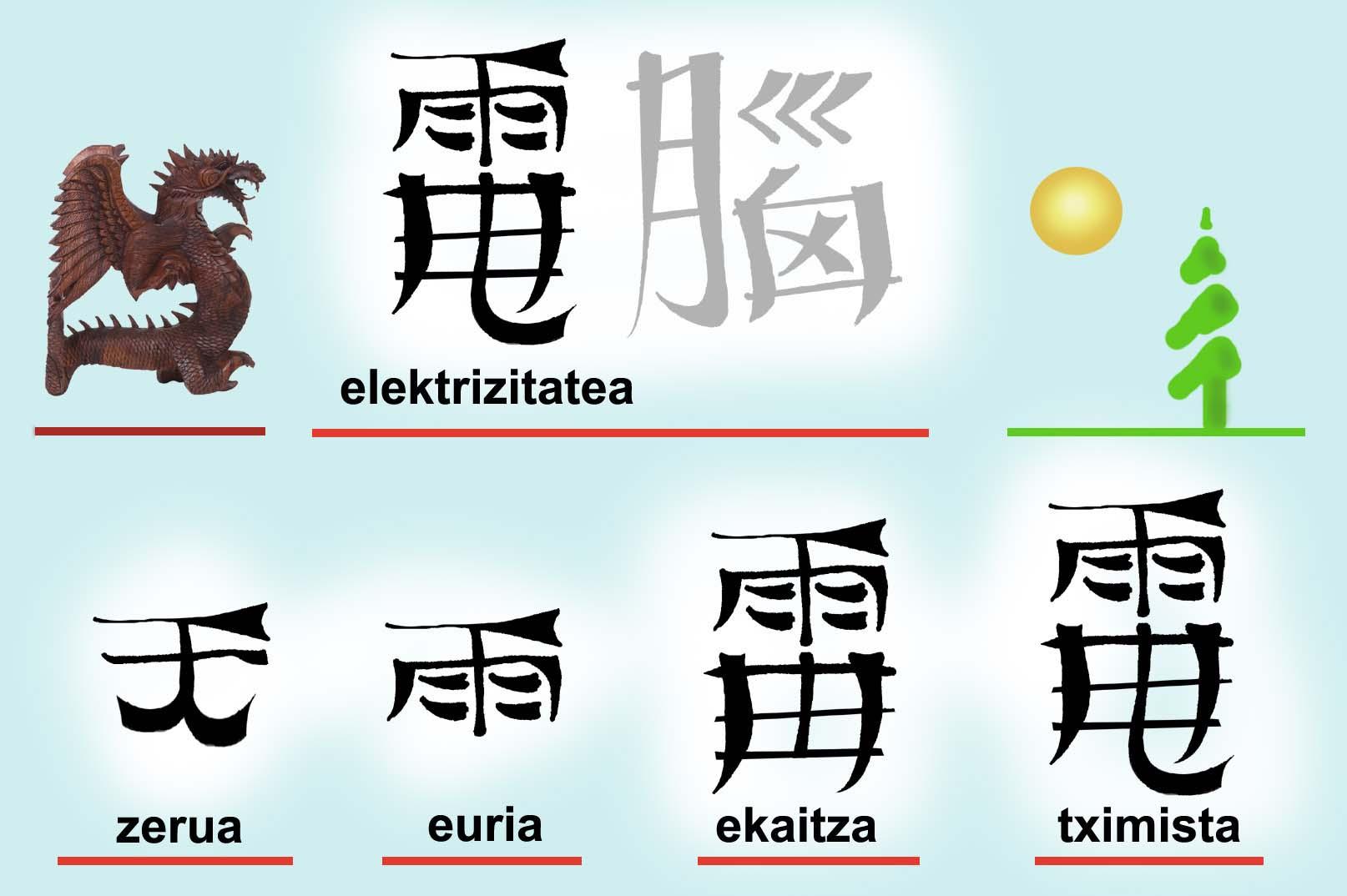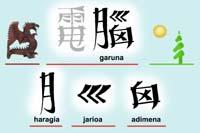Computer in Chinese

The word computer is a curious combination of drawings, as you can see in the image above.
However, a language needs more complex things than that, and Chinese has all kinds of resources to express very complex things. Sometimes they use phonetic symbols like us (a symbol, a sound) or combining ideograms and phonetic symbols. But on other occasions they maintain the traditional method of expressing modern concepts. For example, to indicate the computer.
Seven symbols
The word computer is a curious combination of drawings that you see in the photo entry. In total it is a combination of seven ideograms, seven symbols and seven meanings of them. The result is two general ideograms: that of the left means electricity and that of the right the brain. Therefore, the general meaning is the electric brain, the computer.

To develop the general ideogram of the left it was based on the ideogram of representation of the sky.
(Picture: G. Roa)
To develop the general ideogram of the left, the Chinese departed from the ideogram of representation of the sky. Taking the top of the sky and adding horizontal lines representing black clouds, you get the ideogram of rain. Added to the rain is the symbol of the field, a square divided into four parts; the combination, the cloudy sky on a meadow, gives an idea of the storm and uses it to express the idea of thunder. Further, adding a small tail below, the idea of thunder becomes that of lightning; lightning or electricity. Hence the electric meaning to the general ideogram of the left.

The general ideogram of the right is a combination of flesh, fluidity and intelligence.
(Picture: G. Roa)
The general ideogram of the right margin is a combination of three small ideograms: that of meat, that of fluidity and that of intelligence (which means intelligent or intelligent). In short, the brain is an organ with a piece of intelligent flesh and a flow of thoughts. Therefore, the meaning of the general ideogram is the brain.
Now it is only necessary to place the two ideograms together to express the ‘electric brain’. The electric brain (we would say electronic) is a computer, just like the computer in English computer, French ordinateur, Spanish and Basque. In Chinese it is written following two complex ideograms and pronounced /dian nao/.
Tendency to simplify
Really complex. And not only for us, the Chinese realized it long ago. Writing with ideograms, although within a logic, can be very complex. In short, for those who do not know how to write, this system is a great obstacle. The communist government wanted to solve it and did a great job to simplify the language to the fullest.
However, some defended traditional writing, arguing that people would not be able to read ancient texts with simplified writing. There was a great debate on this issue, but finally the Chinese government opted for simplification.
Both scriptures are currently used, as they have adopted a local decision. They have opted for traditional Chinese, for example in Hong Kong, Macaun, Taiwan and in many communities of European and American Chinese immigrants. In the People’s Republic of China, on the contrary, simplified writing has gained strength and the ‘simple’ version of words is used. The word computer is no exception. They simplify. However, from our western point of view, the simplified form is also a complex ideogram.
Published in 7K.
Buletina
Bidali zure helbide elektronikoa eta jaso asteroko buletina zure sarrera-ontzian











